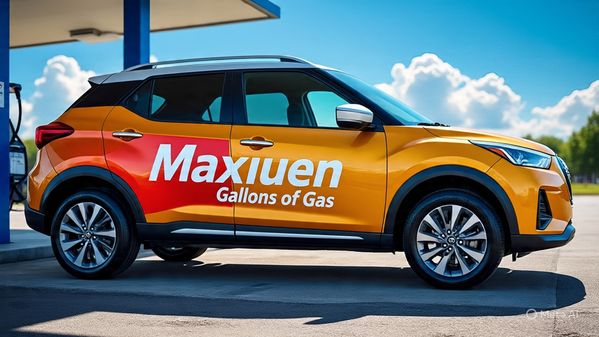
Navigating the Bumps: Making Sense of GM Layoffs in 2025
Okay, let’s talk about the elephant in the room: GM layoffs. If you’ve been following the auto industry news lately, especially since late 2024 and into this year, you’ve probably seen the headlines. They’ve been tough, sparking worry for workers and raising big questions about the future of driving. It’s easy to just see numbers and percentages, but behind every statistic is a person, a family, and a community feeling the impact. As someone who’s been deep in the trenches of auto industry analysis and workforce shifts for over seven years, I want to cut through the noise. Let’s unpack what’s really driving these GM layoffs, who’s most affected, and what it signals for the colossal transformation the entire auto sector is wrestling with right now. This isn’t just about GM; it’s a microcosm of the painful, necessary, and often messy transition happening across the industrial landscape.
General Motors, a titan of American manufacturing for over a century, finds itself at a critical crossroads. The push towards electric vehicles (EVs) isn’t just a trend; it’s a fundamental restructuring of the industry’s DNA. But the road to an all-electric future has proven far bumpier and more expensive than anyone anticipated just a few years ago. Consumer adoption, while growing, hasn’t hit the stratospheric heights predicted in the early 2020s. Charging infrastructure remains a patchwork quilt. Raw material costs, especially for critical EV batteries, have been volatile. All of this has put immense pressure on GM’s bottom line, forcing some incredibly tough decisions.
So, when we see announcements about GM layoffs impacting salaried workers, specific plants, or even entire vehicle programs being delayed, it’s crucial to look beyond the immediate shock. This is a complex story involving technological disruption, economic headwinds, strategic pivots, and, most importantly, human lives. My goal here isn’t to sugarcoat things or assign simple blame. It’s to provide a clear-eyed, informed perspective on why this is happening now, what GM’s leadership is trying to achieve, and what the broader implications might be for the workforce and the cars in our driveways. Buckle up; it’s a pivotal moment.
Why Now? The Perfect Storm Fueling GM Layoffs
To understand the “why” behind the recent waves of GM layoffs, we need to look at the confluence of factors hitting automakers simultaneously. It’s not just one thing; it’s a perfect storm of challenges that have forced GM’s hand in restructuring its operations more aggressively than planned.
First and foremost is the EV Investment Crunch. GM, like its rivals Ford and Stellantis, committed billions – we’re talking tens of billions – to rapidly transition its lineup to electric power. Think massive new battery plants (like Ultium Cells joint ventures), completely redesigned vehicle architectures, and retooling existing factories. This level of capital expenditure is staggering. However, the return on that investment is taking longer than expected. While EV sales are growing (GM delivered a record number globally in 2024, around 1.2 million units), the pace hasn’t kept up with the sheer speed and cost of the initial rollout. Profit margins on EVs are still significantly thinner than on traditional internal combustion engine (ICE) trucks and SUVs, which remain GM’s profit powerhouses. Funding the future while maintaining the present cash cow is creating intense financial pressure.
Secondly, we have the Economic Cooling Effect. Let’s be real: 2024 wasn’t exactly an economic boom year globally. Persistent inflation, higher interest rates (making car loans more expensive), and whispers of a potential recession (though largely avoided so far) have made consumers more cautious. People are holding onto their current vehicles longer, and when they do buy, they might opt for a cheaper model or delay a purchase altogether. This softening demand, particularly noticeable in the mid-market segments where GM competes fiercely, means factories aren’t running at full capacity. Idle plants and unsold inventory are kryptonite to automaker profits, directly leading to production cuts and, inevitably, workforce reductions – the GM layoffs we’re seeing.
Finally, there’s the Strategic Realignment Factor. Under CEO Mary Barra’s “Winning with EVs” strategy, GM set ambitious targets, including aiming for an all-electric light-duty lineup by 2035. However, the market realities mentioned above have forced a tactical shift. In late 2024, GM made headlines by announcing a renewed focus on plug-in hybrid electric vehicles (PHEVs) for the North American market, acknowledging that consumers need more transitional options. This pivot, while pragmatic, means reallocating resources. Some purely EV-focused programs might be slowed or resources pulled back, while ICE programs nearing end-of-life might be phased out faster. This kind of strategic course correction almost always involves restructuring the workforce – streamlining teams focused on sunsetting technologies and ramping up in new areas, often leading to net reductions in the short term. It’s a painful recalibration.
Who’s Feeling the Impact? Beyond the Numbers
When headlines scream “GM Cuts X Thousand Jobs,” it paints a broad, impersonal stroke. But the reality of GM layoffs is much more nuanced, affecting different groups in distinct ways. Understanding where the axe is falling helps paint a clearer picture of GM’s priorities and the human cost.
Salaried & Technical Staff: A significant portion of the GM layoffs announced in late 2024 and continuing selectively through 2025 has impacted white-collar workers. This includes engineers, designers, middle managers, and administrative staff, particularly in areas perceived as overlapping or less critical to the immediate strategic pivot. Think roles heavily focused on advanced, future-facing autonomous tech (where GM’s Cruise unit faced major setbacks in 2023/2024, leading to its own significant cuts and a strategic pullback), or specific ICE powertrain development as resources shift towards EVs and now PHEVs. These cuts are often framed as “streamlining” or “reducing bureaucracy,” aiming to create a leaner, faster-moving organization. For those affected, it often means navigating a competitive tech job market, sometimes requiring significant retraining.
Specific Manufacturing Plants: While large-scale hourly worker layoffs via plant closures have been less prominent in the very latest news compared to prior years (like the 2019 Lordstown closure), targeted production slowdowns and line speed reductions directly impact factory workers. For instance, slowing production of slower-selling sedans or specific SUV models due to inventory build-up leads to temporary layoffs or reduced hours for hourly UAW workers. Furthermore, the transition to EVs inherently changes manufacturing processes. Retooling a plant for EV production often involves significant downtime and requires a differently skilled workforce. While GM has committed to transitioning existing workforce where possible (a key part of the 2023 UAW negotiations), these transitions are complex and can involve temporary displacements or require workers to relocate or retrain extensively. The fear and uncertainty during these periods are very real on the factory floor.
Contractors & Suppliers: The ripple effect of GM layoffs extends far beyond GM’s direct payroll. Automakers rely on a vast ecosystem of suppliers and utilize thousands of contractors. When GM reduces production volumes, delays new programs, or cuts internal projects, it directly impacts these external partners. Supplier companies may face order cancellations or reductions, forcing them to implement their own layoffs. Technical contractors (IT, engineering services, marketing) often see their engagements terminated abruptly when budgets tighten or priorities shift. This secondary impact spreads the economic pain throughout the automotive supply chain and regional economies heavily dependent on GM, often in areas already facing economic challenges. It’s a hidden layer of the layoff story.
The EV Connection: Pivot, Not Abandonment
It’s impossible to discuss GM layoffs without diving deep into the electric vehicle factor. The EV transition isn’t just *a* reason; it’s arguably the central strategic driver forcing GM’s current restructuring. But it’s crucial to understand: this isn’t GM backing away from EVs. It’s a pragmatic recalibration of how and how fast it gets there.
The Cost Conundrum: Building EVs profitably at scale remains the auto industry’s Everest. Battery costs, while falling, are still high. Developing dedicated EV platforms (like GM’s Ultium) and the sophisticated software that runs these cars requires massive, upfront R&D investment. GM’s initial EV strategy, announced with much fanfare, involved a blitz of new models across brands (GMC Hummer EV, Cadillac Lyriq, Chevrolet Silverado EV, Blazer EV, Equinox EV). However, ramping up production smoothly has proven challenging (recall the Blazer EV software stop-sale in late 2023?), and achieving cost targets has been tougher than expected. The GM layoffs, particularly in salaried ranks, are partly about freeing up capital to keep funding this expensive technological revolution while weathering slower-than-hoped initial returns. It’s a financial triage.
The Hybrid Hedge: The most significant strategic shift announced in late 2024 was GM’s embrace of Plug-in Hybrid Electric Vehicles (PHEVs) for North America. This was a notable reversal from their previous “all-in, skip hybrids” stance. Why? Market feedback screamed loud and clear. Range anxiety, charging access concerns (especially for apartment dwellers or those without home charging), and the higher upfront cost of pure EVs are real barriers for many mainstream buyers. PHEVs offer a compelling bridge: significant all-electric range for daily commutes (often 30-50 miles) with a gasoline engine eliminating range anxiety for longer trips. Developing and launching PHEV versions of popular models like the Chevrolet Equinox, Tahoe, and Silverado requires engineering resources. Some of the restructuring and GM layoffs likely involve redirecting talent and budget from purely EV-focused future projects towards these near-term, market-responsive PHEV programs. It’s about meeting consumers where they are now while continuing the EV journey.
Streamlining for Scale: Ultimately, GM’s goal remains to build EVs profitably at massive scale. The current pain, including workforce reductions, is about creating a leaner, more efficient organization capable of executing that goal. This means eliminating perceived redundancies, simplifying processes, and focusing resources ruthlessly on the programs deemed most critical for success in the near-to-mid term (core Ultium-based vehicles, the new PHEV push, high-margin ICE trucks/SUVs). The hope is that by taking these difficult steps now – the GM layoffs being a major one – GM positions itself to be more competitive and profitable when the EV market truly hits its mainstream inflection point, expected later this decade. It’s a brutal but calculated bet on future efficiency.
GM vs. The Competition: Not Alone on This Road
It’s tempting to view GM layoffs as a unique sign of trouble for the Detroit giant. But zoom out, and you see a sector-wide phenomenon. The auto industry globally is undergoing a seismic shift, and restructuring is rampant. GM is far from alone in making tough workforce decisions.
Domestic Rivals: Look across Detroit. Ford announced significant restructuring and job cuts in its European operations and within its EV unit (Model e) throughout 2023 and 2024, citing similar pressures: high EV development costs and the need for profitability. Stellantis (parent of Jeep, Ram, Chrysler, etc.) implemented voluntary buyouts for thousands of U.S. salaried workers in 2023 and has faced its own challenges with EV adoption curves. The pressures GM faces – high investment costs, slower EV adoption than hoped, economic headwinds – are industry-standard issues. The GM layoffs reflect a broader pattern of automakers scrambling to adjust their cost structures and operational footprints to match the new, capital-intensive reality of the electric and software-defined vehicle era. It’s a painful industry reset.
The Tesla Effect & New Entrants: Then there’s the disruptor: Tesla. While Tesla implemented its own significant layoffs globally in 2024 (around 10% of its workforce), its impact on the industry is undeniable. Tesla’s vertically integrated model (especially battery production) and relentless focus on cost reduction set a high bar for efficiency and profitability that legacy automakers like GM are desperately trying to reach. Furthermore, GM and other established players face increasing pressure from well-funded Chinese EV makers (like BYD, Nio, XPeng) expanding aggressively into Europe and eyeing other markets. These companies often benefit from significant government support and lower manufacturing costs. Competing globally requires extreme efficiency, further fueling the drive towards leaner operations – which, sadly, often means GM layoffs and similar actions across the sector.
Global Pressures: Beyond the pure players, traditional giants worldwide are feeling the pinch. Volkswagen Group has undergone multiple restructuring rounds. Renault, Nissan, and others in Europe and Asia have announced workforce reduction plans tied to electrification and cost targets. The table below highlights the common challenges driving these widespread cuts:
| Pressure Point | Impact on Automakers | Resultant Action |
|---|---|---|
| Massive EV R&D Costs | Drains cash reserves; delays profitability | Prioritization of projects; budget cuts; Layoffs |
| Slower EV Adoption | Lower than expected revenue from new EVs; excess capacity | Production slowdowns; program delays; Plant Impacts |
| Economic Uncertainty | Reduced consumer spending; higher financing costs | Inventory management; cost cutting; Workforce Reduction |
| Intense Competition | Pressure on pricing; need for operational excellence | Drive for efficiency; restructuring; Streamlining |
| Technological Shift | Need for new skills (software, battery tech); legacy costs | Workforce retraining/reskilling; Role Elimination |
This context is vital. The GM layoffs are a symptom of a global industry in the throes of its most significant transformation since the moving assembly line. Survival requires adaptation, and adaptation, in this case, is proving painful.
What’s Next? The Human and Industry Outlook
So, where does this leave us? For those directly impacted by GM layoffs, the immediate future is undeniably challenging. Navigating severance packages (which GM typically structures with pay, benefits continuation, and outplacement services), updating resumes in a competitive job market, and potentially considering retraining for new fields is a daunting reality. The emotional toll, the hit to community stability (especially in GM-centric towns), and the uncertainty are profound. Support networks, career counseling, and leveraging state and federal assistance programs become critical lifelines.
For GM as a company, the path forward hinges on executing its adjusted strategy effectively. Can it:
-
Successfully launch compelling PHEVs that capture market share and generate profit quickly?
-
Resolve production bottlenecks and software issues to ramp up Ultium-based EVs smoothly and cost-effectively?
-
Achieve significant cost savings from the restructuring (including the GM layoffs) to improve margins and fund future investments?
-
Maintain the trust and morale of its remaining workforce during this turbulent period?
-
Navigate intensifying global competition, particularly in the EV space?
The success of these efforts will determine GM’s long-term competitiveness. The 2023 UAW contract, while securing significant wage gains for hourly workers, also included commitments from GM regarding future product allocation to U.S. plants and investments in existing facilities, offering some stability for the unionized workforce amidst the broader uncertainty.
For the auto industry at large, the era of easy money and predictable transitions is over. The next few years will be defined by consolidation, relentless cost focus, and strategic agility. Expect more partnerships (like GM’s with Honda or previous ones), potential mergers and acquisitions, and continued workforce realignment as the shift towards electrification and software continues, albeit potentially at a more measured pace than initially forecast. The GM layoffs are a stark reminder that this transition, while necessary for environmental and technological reasons, comes with significant human and economic costs that need careful management by companies, policymakers, and communities alike.
Conclusion: More Than Just a Restructuring
The story of GM layoffs in 2024 and 2025 is complex and layered. It’s not simply a story of a company failing or abandoning its future. It’s a story about the immense challenges of leading a century-old industrial giant through a period of unprecedented technological disruption amid economic uncertainty.
Yes, the layoffs are driven by the need to cut costs and improve efficiency in the face of massive EV investments and softer demand. Yes, the strategic pivot to include PHEVs reflects a pragmatic response to market realities. And yes, GM is far from alone in navigating these turbulent waters. But at its heart, this is a human story. It’s about thousands of individuals and families whose careers and livelihoods are being upended as the industry reshapes itself. It’s about communities grappling with the economic fallout. It’s about the tension between the imperative for innovation and the human cost of change.
Understanding the GM layoffs requires looking beyond the quarterly earnings reports and the stock price fluctuations. It demands recognizing the confluence of technological ambition, economic pressure, strategic recalibration, and the profound human impact. As the auto industry continues its electrified evolution, the lessons learned from this period – about managing transitions, supporting displaced workers, and balancing innovation with economic reality – will be crucial not just for GM, but for the entire industrial landscape navigating the 21st century. The road ahead remains uncertain, demanding resilience and adaptability from everyone involved.
Your GM Layoffs Questions Answered (FAQs)
Let’s tackle some of the common questions buzzing around about these GM layoffs. I get these a lot, so let’s break them down plainly:
-
“Is GM giving up on electric cars because of these layoffs?”
Absolutely not. Think of it more like changing the route, not canceling the trip. The GM layoffs are partly about funding the massive cost of going electric while things take longer to become super profitable than they hoped. They’re still building battery plants and launching EVs (like the Equinox EV, Silverado EV RST hitting dealers now). The big news is they added plug-in hybrids (PHEVs) back into the plan for North America to give buyers more choices now while the pure EV charging network and cost issues get sorted. EVs are still the end goal, but they’re being pragmatic about the journey. -
“Who exactly is getting laid off? Is it just factory workers?”
It’s a mix, but the most noticeable cuts lately have been in the “white-collar” jobs – engineers (especially those focused on tech that’s being phased out or deprioritized), project managers, some designers, and administrative staff. There have also been impacts on factory workers, but often through temporary shutdowns or reduced line speeds for slower-selling models rather than permanent plant closures recently. Contractors working on GM projects have definitely been hit hard too. So, it’s across the board, but salaried roles seem to be bearing a significant brunt in this latest phase. -
“Will there be MORE GM layoffs coming down the road?”
Honestly? It’s hard to say for sure, and anyone claiming to know definitively is guessing. A lot depends on how the economy holds up, how quickly their new Equinox EV and PHEVs sell, if they hit their cost-cutting targets from this round, and how smoothly the EV ramp-up goes. While GM’s leadership has signaled they want this restructuring to be substantial enough for now, the auto industry is volatile. If EV adoption stalls further or the economy takes a dip, more adjustments (which could include further cuts) are always possible. They’re definitely trying to do a big reset now to avoid that, but it’s a dynamic situation. -
“I heard GM got a big union deal. Why layoffs then?”
That’s a really sharp question. The 2023 UAW contract did secure major wage increases (like 25%+ over the life of the contract) and better benefits for hourly workers. That does increase GM’s labor costs. However, the GM layoffs we’re talking about now primarily impact salaried workers, not hourly UAW members directly. The contract also included commitments from GM to invest in US plants and allocate future products (including EVs) to union facilities. So, while the higher hourly wages add cost pressure overall (contributing to the need for broader cost savings/efficiency), the recent layoffs aren’t primarily targeting the unionized workforce covered by that new agreement. The savings are being sought elsewhere in the company structure.






